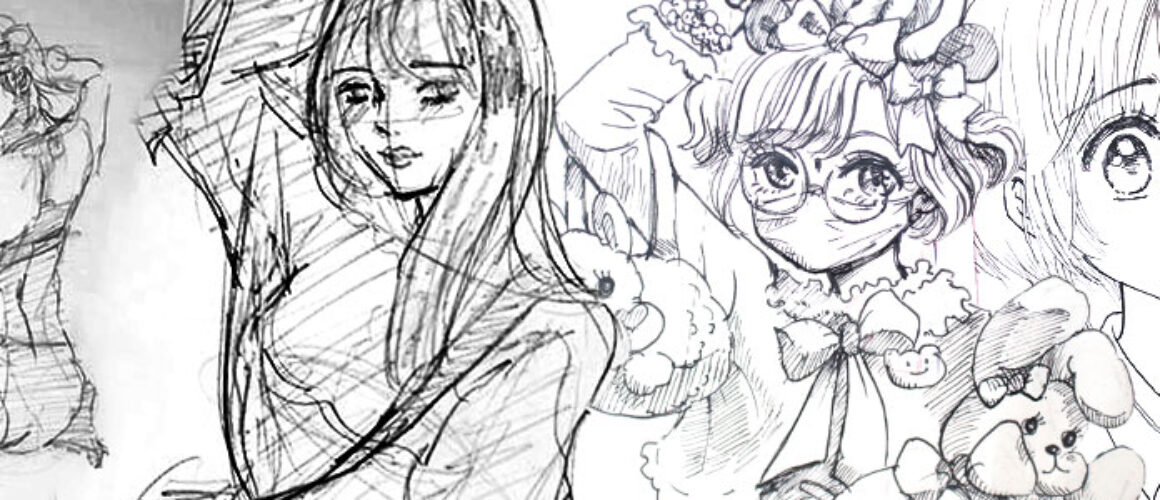How to Improve Your Manga Drawing Skills Easy Basics Under $50 Budget
Do you wonder how to improve Your manga art but don’t Know How?
One day I was scrolling online, and saw a video in which someone said:
“You don’t need art skills to learn how to draw anime.”
Which is totally WRONG. Of course, there are many people who “think” their style is unique in the world so they do not need to change forever. But this is just an excuse for not learning the correct techniques to improve your art.
People may also think that art is not like science, art does not have a formula. This is also wrong. Of course, you can enjoy your style for a long time and stop there, or you can study and learn from different masters so you can be better than them. Which would you choose? Life is long, why not try?
How to Start: Art Materials For Practice Manga
When we get started, first we have to get materials. Have you ever wondered: “what paper do manga artists use? ” Well, nothing special. Because this is practice for beginners, I recommend some inexpensive but very handy tools.
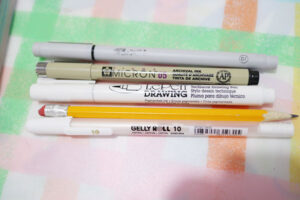
- The pens I’m using are Sakura pigma Micron 05, Winsor & Newton Black Fineliner 0.1mm, LePen drawing brush pen, GellyRoll 10 , and a regular pencil. As you can see, roughly total under $10.
I love the Winsor Newton fineliner pen the most because it gives a really smooth line in all of the liners I have used. Also, you can see I have used it a lot so it lost print outside. The brush pen is for blacking hair, white pen is for effect and correction. You can also add erasers, mechanical pencils, and others as you like. Also, there are many different fineliners on the market. If it is possible I think it’s worth it to try as many as you can.
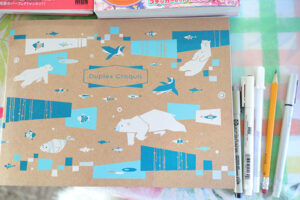
- The sketchbook I’m using is Duplex Croquis from Kokuyo:
This is only 11 dollars plus tax and shipping, and it comes with 100 pages. The pros are that it is extremely smooth. Your pen won’t be affected by the texture at all, so you can draw very smooth lines. The cons are that it is too thin so you need to be careful when you erase the pencil lines. And no watering. But it is enough and beyond for only pen and ink. I will call it a professional manga paper pad just because of the quality and price.
Why Study Poses

This drawing looks fine, but I am too awkward to show it. Why? Because the poses are rigid, the girls are shaking, and the figure is flat. So if you do not study poses, how can you create nice figures?
How to Study Manga Anatomy
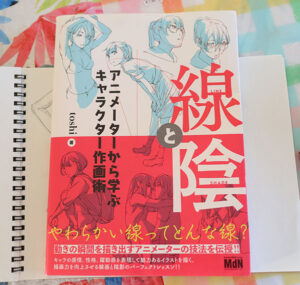
This is the textbook I am learning recently to study manga anatomy. 線と陰 アニメーターから学ぶキャラクター作画術 by toshi. The best part of this book is it explains many examples of how to draw nice poses to make the figure lively. It has many detailed how to draw manga characters step by step so you can follow.


I also learned that a figure should be treated like a volumized body not a flat. With the “Volumized” idea buried in the mind, my figures have skeletons and weight inside, they are not shaking anymore!

And I have to say the girl’s clothes look more volume after applying the structure correctly.

Why Practice Lines
There is a saying in the manga industry: “ Good lines are very rare.” Good lineart skills are very rare, so it is a foundation that must be practiced constantly.

Here are some examples of good lines. (Well, it still needs practice.) A good line should firm, clean, crisp, no weak, shaking, or scabbing. Lines have many feelings, smooth lines tell a nice story, while shaking lines may imply sad or unpleasant feelings. I have searched around trying to find what is the skill of making good line art, the answer is to keep practicing and drawing with heart. So keep this in mind and keep practice.

Maybe you think this is good enough, but not the case.
How to Draw good Lines.
The method I am using is copying from magazines. People may think that size doesn’t matter as well as your eyes can see. But it does matter in this case. The magazine I am using is なかよし 2021年5月号. Since you do not need to learn how to speak Japanese (that is another story), all you need is this magazine for only 6 dollars (surprisingly cheap right?)

People may think it is easier and free just using their phone or tablet to draw from, here is why dont do that: first, you cannot see the incredible details from your phone, and you have no idea what brush size the artist was using.

Artist: Clamp, カードキャプターさくら, なかよし 2021年5月号
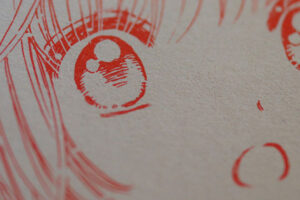
Magazines are a great resource for studying manga because the magazine prints have a very nice scale that is close to the original artwork (maybe shrunk a little but it is the cheapest and closest you can find). As you can see, the newspaper texture shows the original pen touches very well.
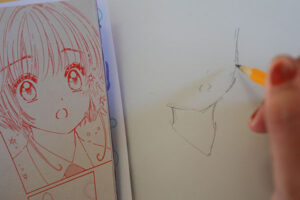

And the best part is you can draw it side by side, compare each stroke.

Artist: Clamp, カードキャプターさくら, なかよし 2021年5月号
See how the work goes with the original.
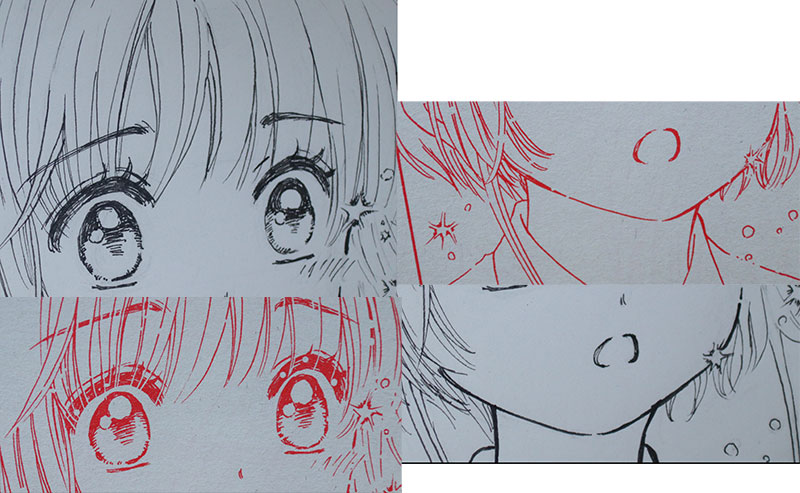 As you can see, many details are improved, but there are some shaking lines in the hair and chin section. My next step is trying a different fineliner or manga pen nib to see which one suits the practice better.
As you can see, many details are improved, but there are some shaking lines in the hair and chin section. My next step is trying a different fineliner or manga pen nib to see which one suits the practice better.
 Can you tell the improvement?
Can you tell the improvement?
Conclusion:
Good manga presentation requires a firm knowledge of human figures, human anatomy, line art techniques. But this skill set is relatively easy because it does not necessarily deal with complex shading, building, color, etc. The first step is knowing your tools: what to buy and how to use them; the second step is to keep practicing human figures, different poses, volumizing the body; the final step is to keep practicing good lines.
As I said in the beginning, there is a formula for good manga techniques, and it can be achieved with purpose. This idea can be applied to all art styles/ materials. If you feel being blocked somewhere, it might be because there are necessary skills you are lacking or do not know. As you learn more and more, you will feel confident to continue your journal.

